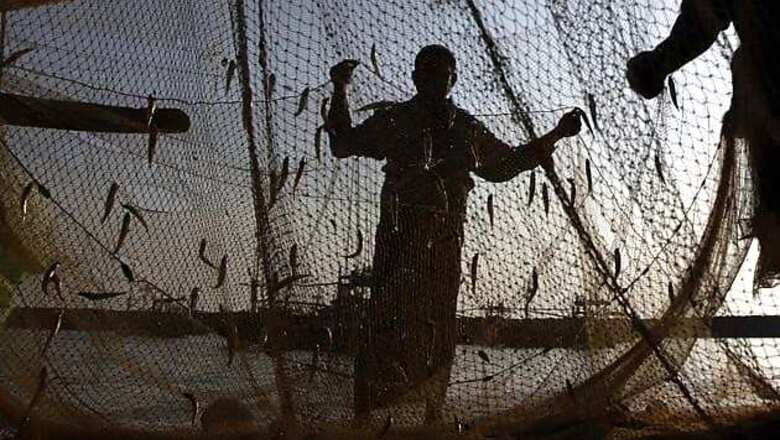
views
Thrissur: Another exotic fish species from North-East India, Bangladesh and Myanmar - Parambassis lala - which is found in the kole wetlands of Thrissur is posing serious threat to the state’s fish bio-diversity. Earlier, there were reports that exotic fish species from South America and Africa like the red piranha, pacu and catfish are posing a severe threat to the state’s rich fish biodiversity.
While piranhas were netted by fishermen from the Chalakkudy river in Kanakkankadavu, Muzhikulam, Annamanada and Pothassery areas, Parambassis lala (Highfin Glassy Perchlet), which is a rare ornamental carnivorous fresh water species, was spotted by local fishermen in the kole wetlands of Muriyad in the district. The carnivorous fish, yellow in colour, with black vertical stripes on its body and measuring around 3.8 cm, was collected from the pools and ditches of the wetlands here by local fishermen.
According to local people, the fish has been sighted in these areas for the past two years. But of late, there has been a drastic increase in their numbers. In a single catch, about 100 to 150 fishes can be caught now, they said.
According to ichthyologists, Parambassis lala, which is found in rivers of Orissa, Tripura, Assam, Bengal, Bihar and Myanmar, is currently classified as ‘Near Threatened’ due to habitat loss and over-exploitation. The level of harvest for the ornamental fish trade was thought to be a threat to the species in India.
“There are a number of ornamental fish traders in the wetland areas of Thrissur who were using barren wetlands as their farms for breeding fishes of this variety to augment their business. However, at the height of the monsoon, when water levels rose in the wetlands, the possibility of the fishes crossing the boundaries of their artificial habitats is very high,” said Monse Vincent, a research scholar at Christ College, Thrissur.
“The new species is spreading its footprint here at an alarming rate,” Vincent added. Since it is a carnivorous variety, this tremendous rise in its numbers poses a grave threat to our natural fresh water species. It eats the fry and larva of the fresh water species during its breeding period, thereby adversely affecting the fresh water fish population here,” he said.
“We have to urgently check its spawning in this habitat, otherwise our natural freshwater fish species would be destroyed completely,” he added.

















Comments
0 comment